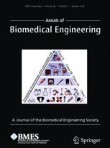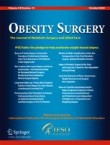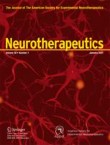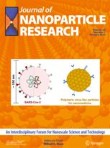|
Αρχειοθήκη ιστολογίου
-
►
2023
(138)
- ► Φεβρουαρίου (74)
- ► Ιανουαρίου (64)
-
►
2022
(849)
- ► Δεκεμβρίου (61)
- ► Σεπτεμβρίου (74)
- ► Φεβρουαρίου (65)
-
►
2021
(2936)
- ► Δεκεμβρίου (59)
- ► Σεπτεμβρίου (180)
- ► Φεβρουαρίου (325)
-
▼
2020
(1624)
- ► Δεκεμβρίου (293)
-
▼
Νοεμβρίου
(376)
-
▼
Νοε 19
(17)
- The ground state of the lithium atom in dense plas...
- Validation of novel patient-centred juvenile idiop...
- EndoPil: A Magnetically Actuated Swallowable Capsu...
- Neck Muscle and Head/Neck Kinematic Responses Whil...
- Efficacy of Liraglutide to Prevent Weight Regain A...
- Modeling of Virtual Mechanical Circulatory Hemodyn...
- Urea entrapment in cellulose acetate microparticle...
- Overlapping Molecular Pathways Leading to Autism S...
- BDNF rs6265 Variant Alters Outcomes with Levodopa ...
- Green synthesis of CuFeS 2 nanoparticles using mim...
- Laparoscopic Greater Curvature Plication for the T...
- A Randomized, Controlled Trial Comparing the Impac...
- Antimicrobial Stewardship in the Intensive Care Un...
- Physical Activity, Medical Home, and Health Behavi...
- Seeking international consensus on approaches to p...
- Preoperative accelerated radiotherapy combined wit...
- Solitary extrapleural fibrous tumor with hepatic b...
-
▼
Νοε 19
(17)
- ► Σεπτεμβρίου (234)
- ► Φεβρουαρίου (28)
-
►
2019
(13362)
- ► Δεκεμβρίου (19)
- ► Σεπτεμβρίου (54)
- ► Φεβρουαρίου (5586)
- ► Ιανουαρίου (5696)
-
►
2018
(66471)
- ► Δεκεμβρίου (5242)
- ► Σεπτεμβρίου (5478)
- ► Φεβρουαρίου (4835)
- ► Ιανουαρίου (5592)
-
►
2017
(44259)
- ► Δεκεμβρίου (5110)
- ► Σεπτεμβρίου (5105)
-
►
2016
(7467)
- ► Δεκεμβρίου (514)
- ► Σεπτεμβρίου (1038)
- ► Φεβρουαρίου (793)
Αναζήτηση αυτού του ιστολογίου
Πέμπτη 19 Νοεμβρίου 2020
The ground state of the lithium atom in dense plasmas using variational Monte Carlo method
Validation of novel patient-centred juvenile idiopathic arthritis-specific patient-reported outcome and experience measures (PROMs/PREMs)
|
EndoPil: A Magnetically Actuated Swallowable Capsule for Weight Management: Development and Trials
|
Neck Muscle and Head/Neck Kinematic Responses While Bracing Against the Steering Wheel During Front and Rear Impacts
|
Efficacy of Liraglutide to Prevent Weight Regain After Retrieval of an Adjustable Intra-gastric Balloon—a Case-Matched Study
|
Modeling of Virtual Mechanical Circulatory Hemodynamics for Biventricular Heart Failure Support
|
Urea entrapment in cellulose acetate microparticles obtained by electrospraying
|
Overlapping Molecular Pathways Leading to Autism Spectrum Disorders, Fragile X Syndrome, and Targeted Treatments
|
BDNF rs6265 Variant Alters Outcomes with Levodopa in Early-Stage Parkinson’s Disease
|
Green synthesis of CuFeS 2 nanoparticles using mimosa leaves extract for photocatalysis and supercapacitor applications
|
Laparoscopic Greater Curvature Plication for the Treatment of Obesity: a Systematic Review
|
-
This protocol presents an in vitro live-imaging phagocytosis assay to measure the phagocytic capacity of astrocytes. Purified rat astrocyt...
-
Association française pour l'étude du cancer [Imatinib in the treatment of chronic myeloid leukemia in Morocco]. Related Articles [Im...
-
A Case of Miller Fisher Syndrome Due to the Use of Cemiplimab : No abstract available Miller Fisher syndrome is a rare, acquired n...







